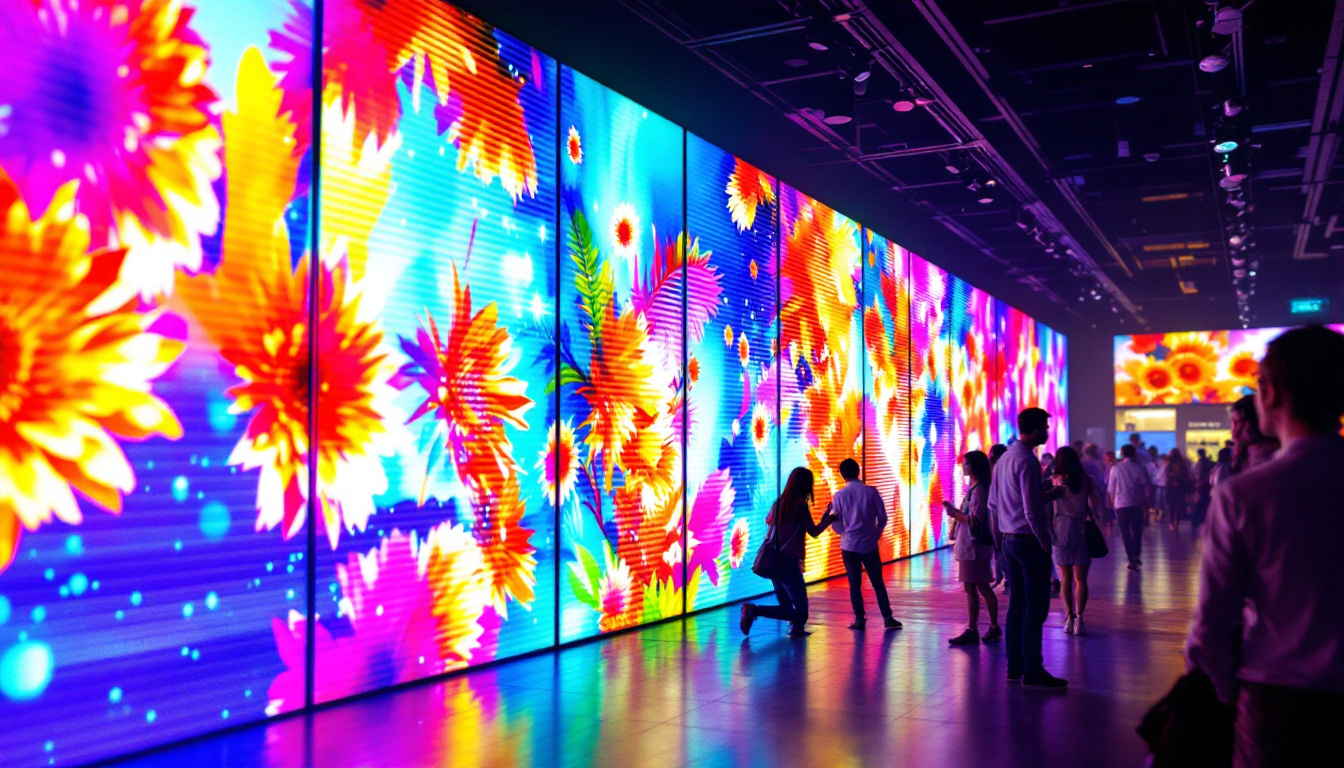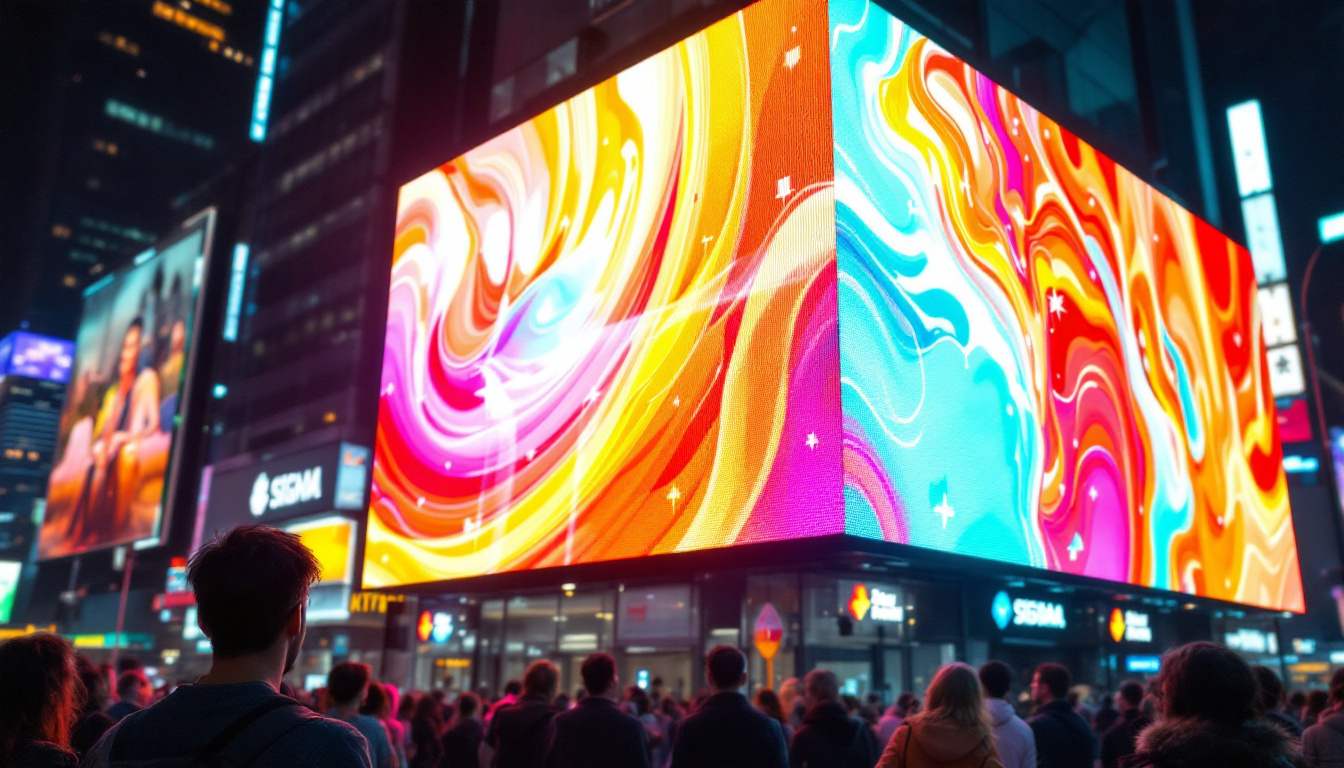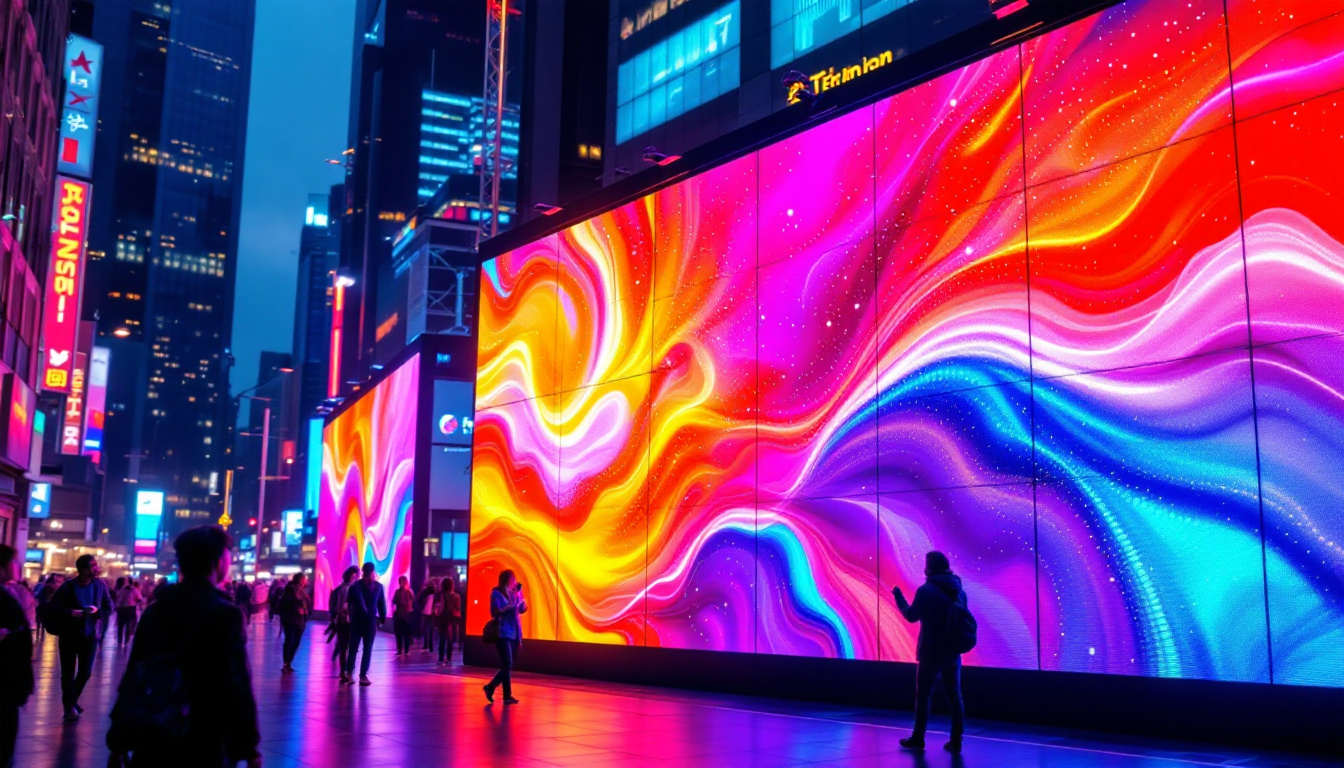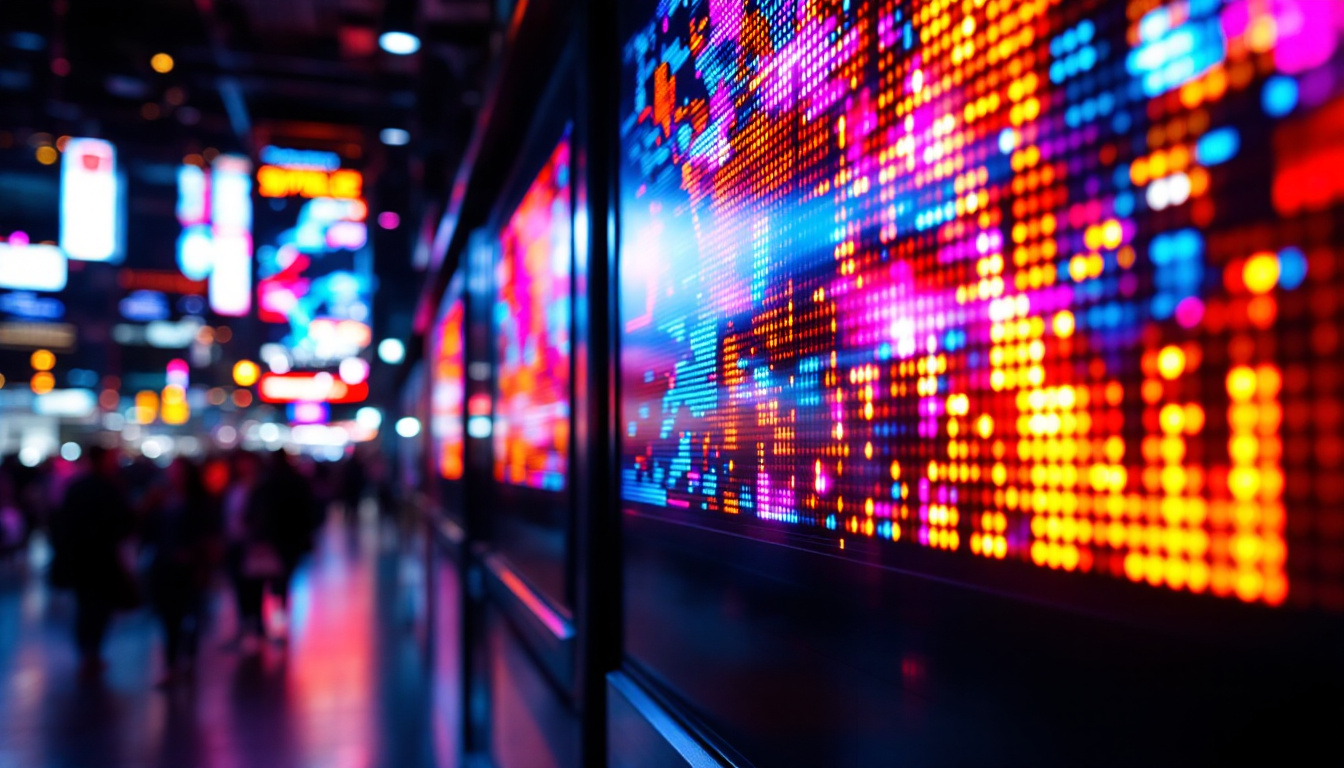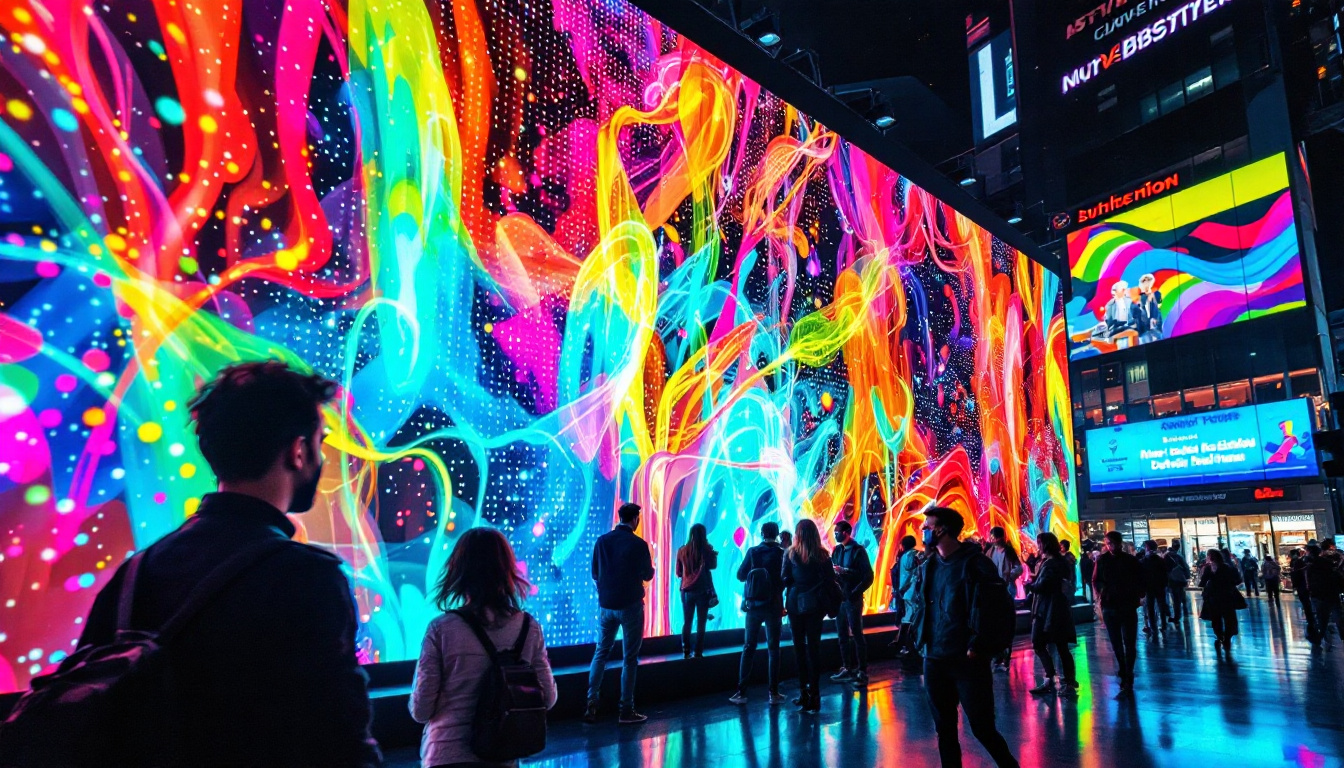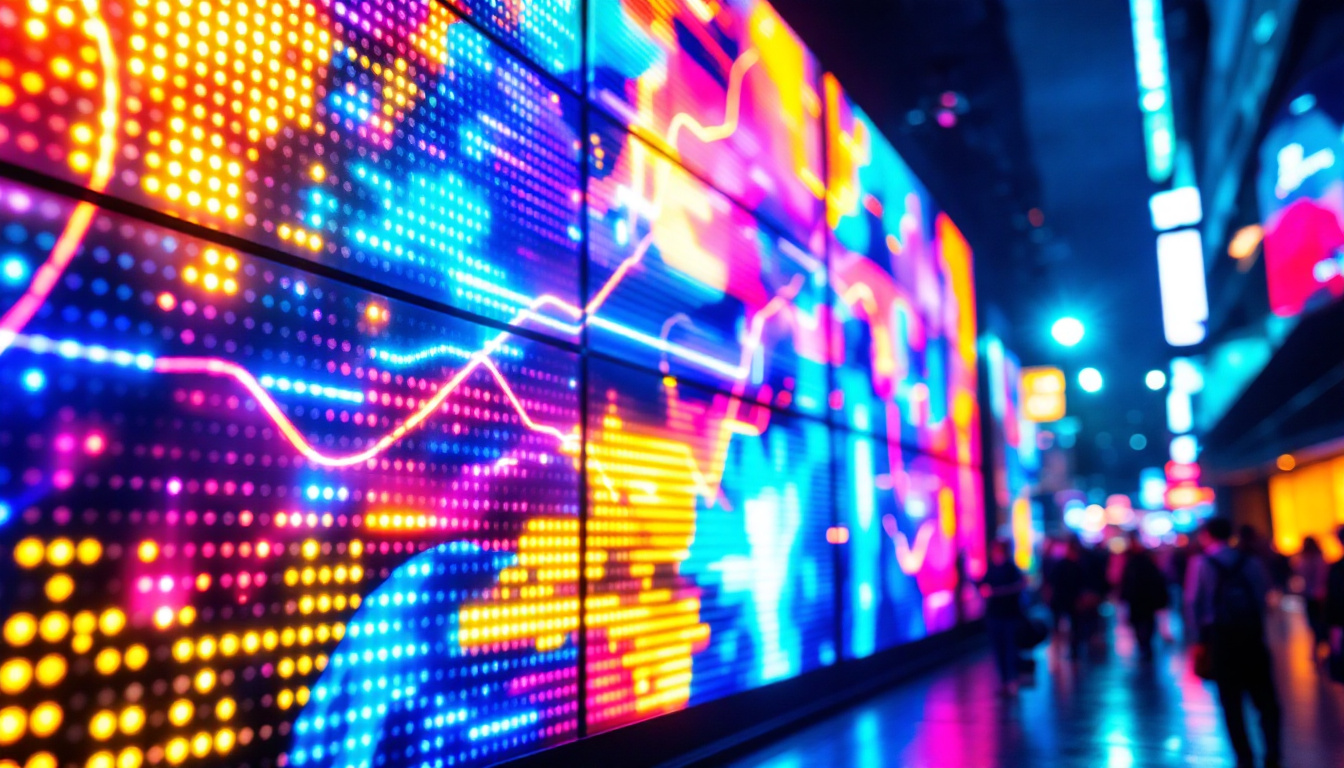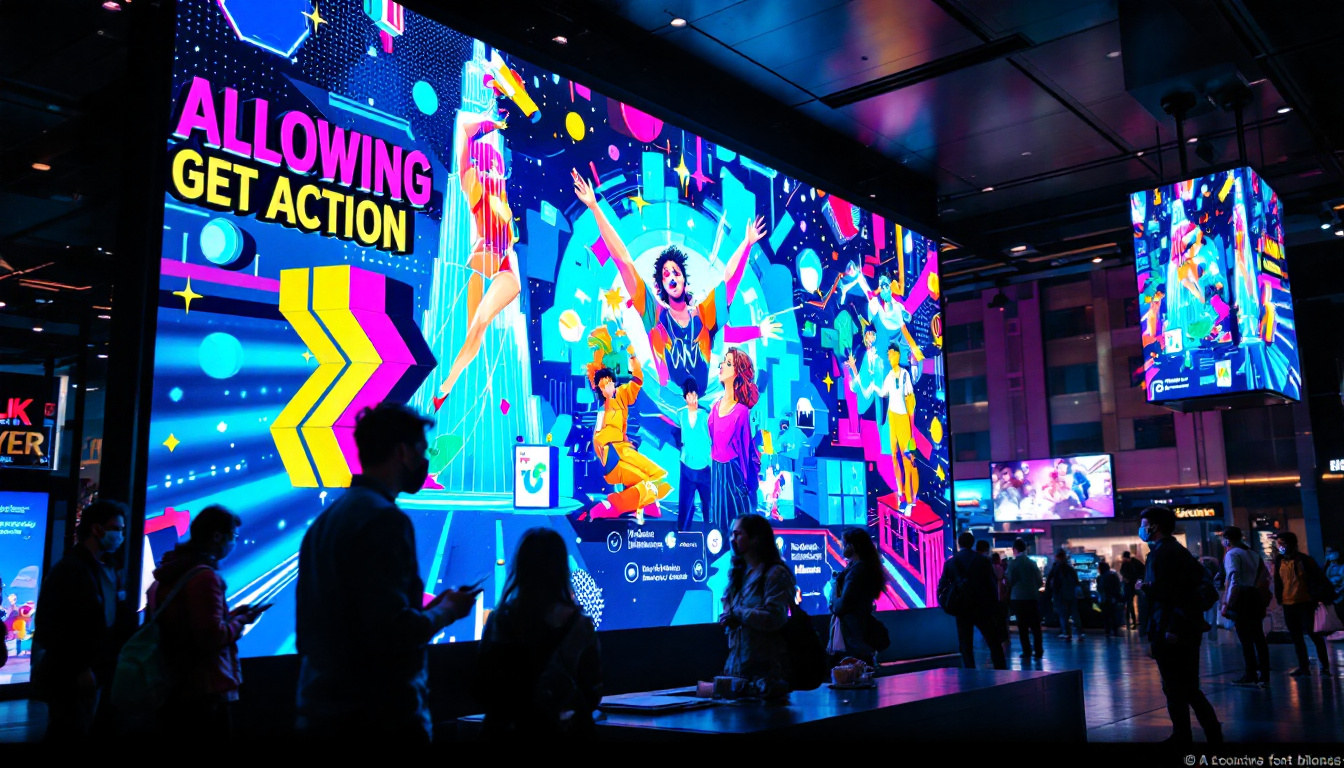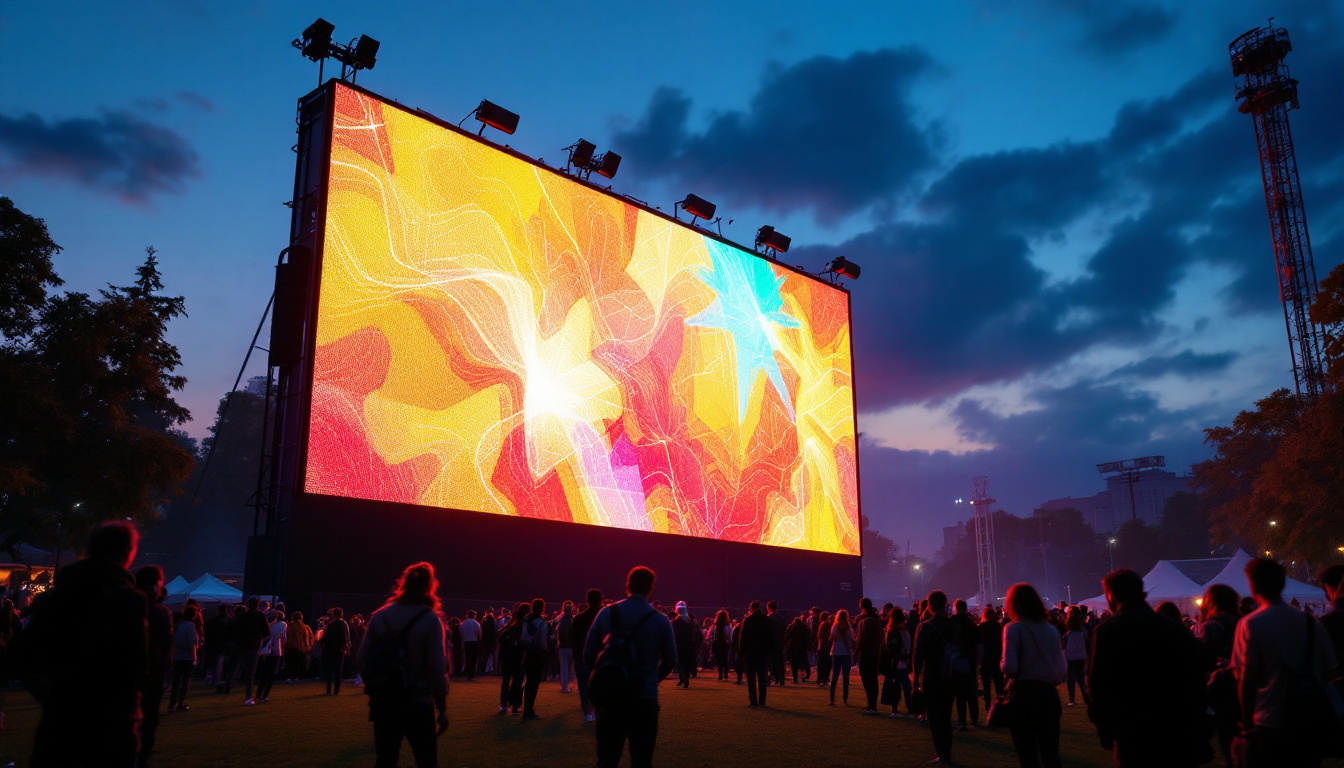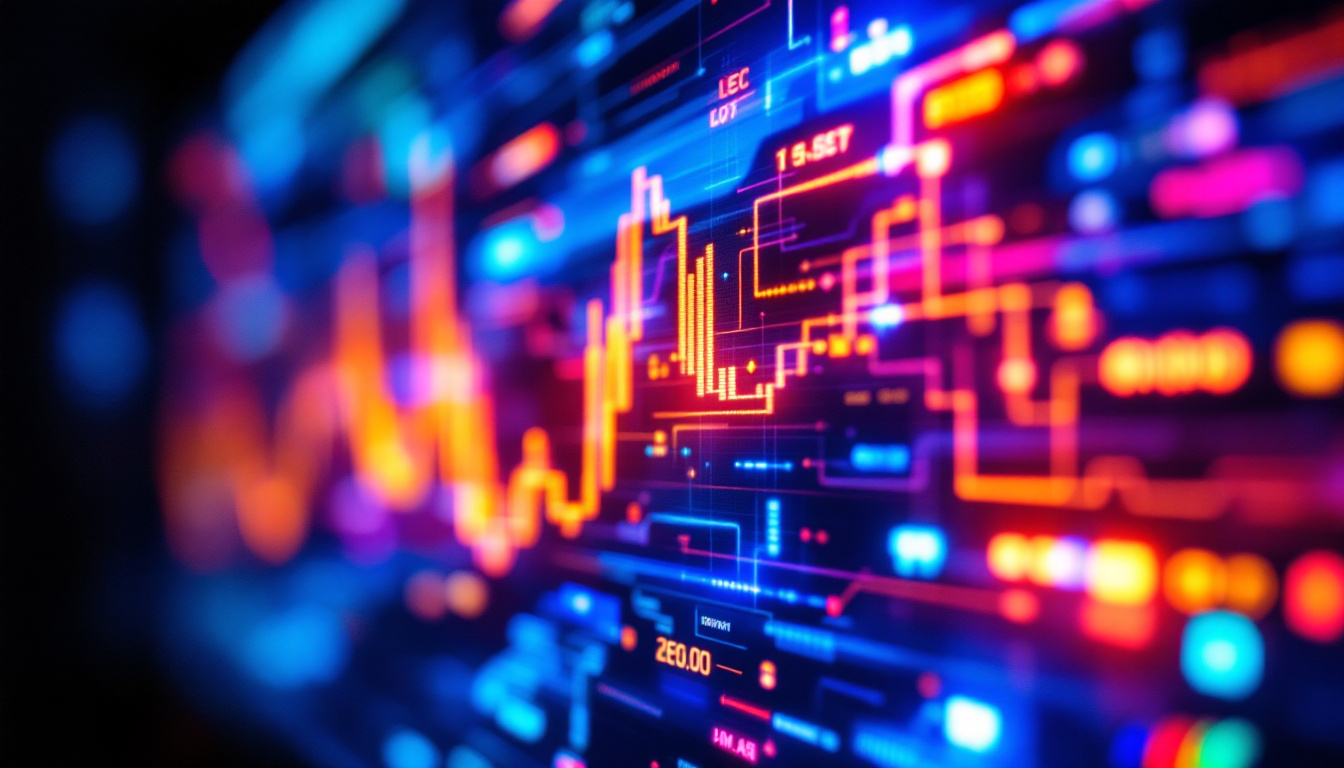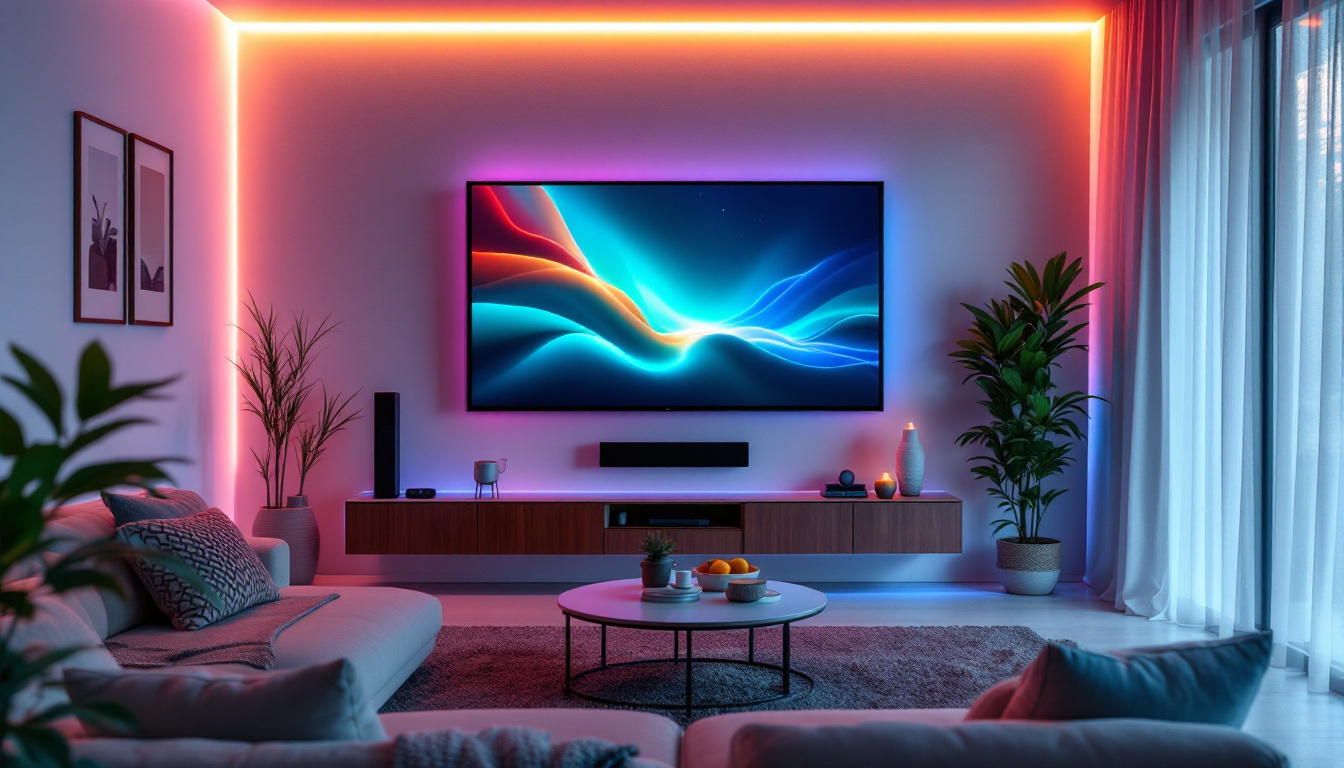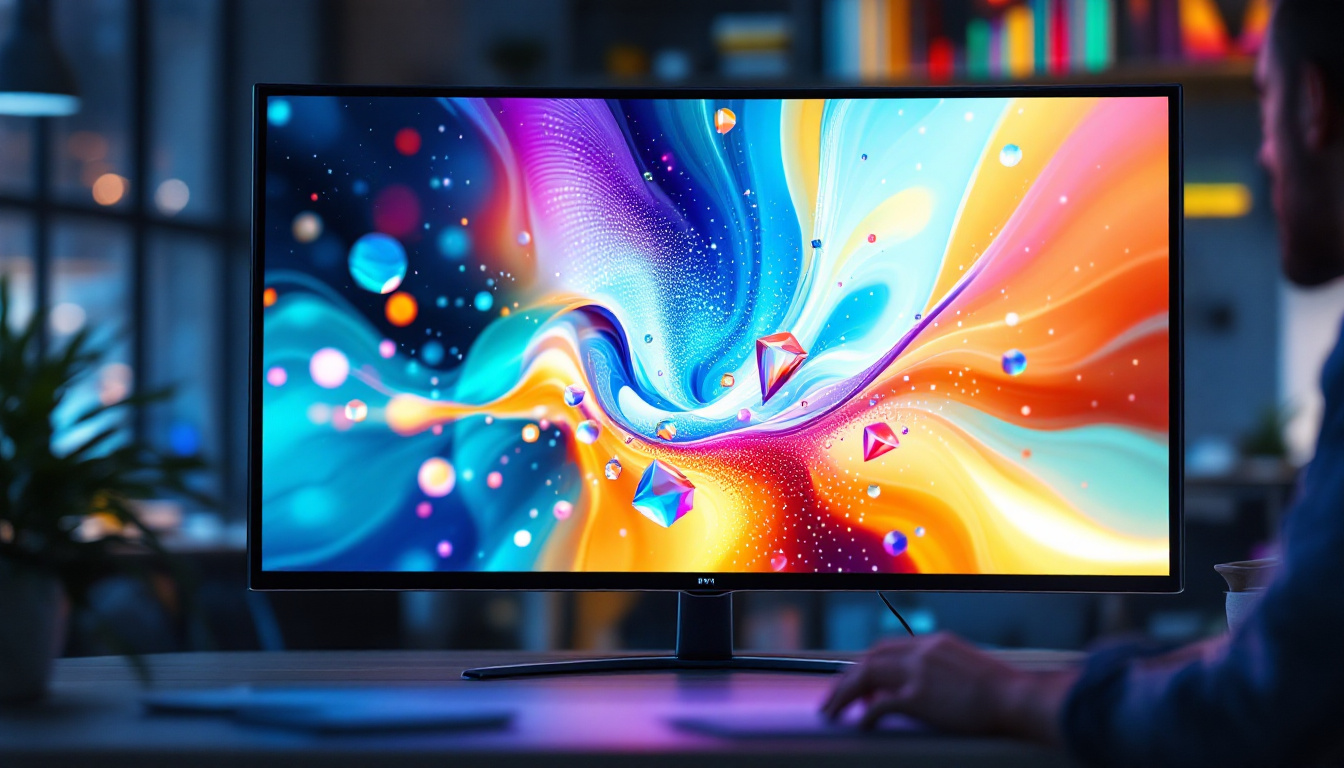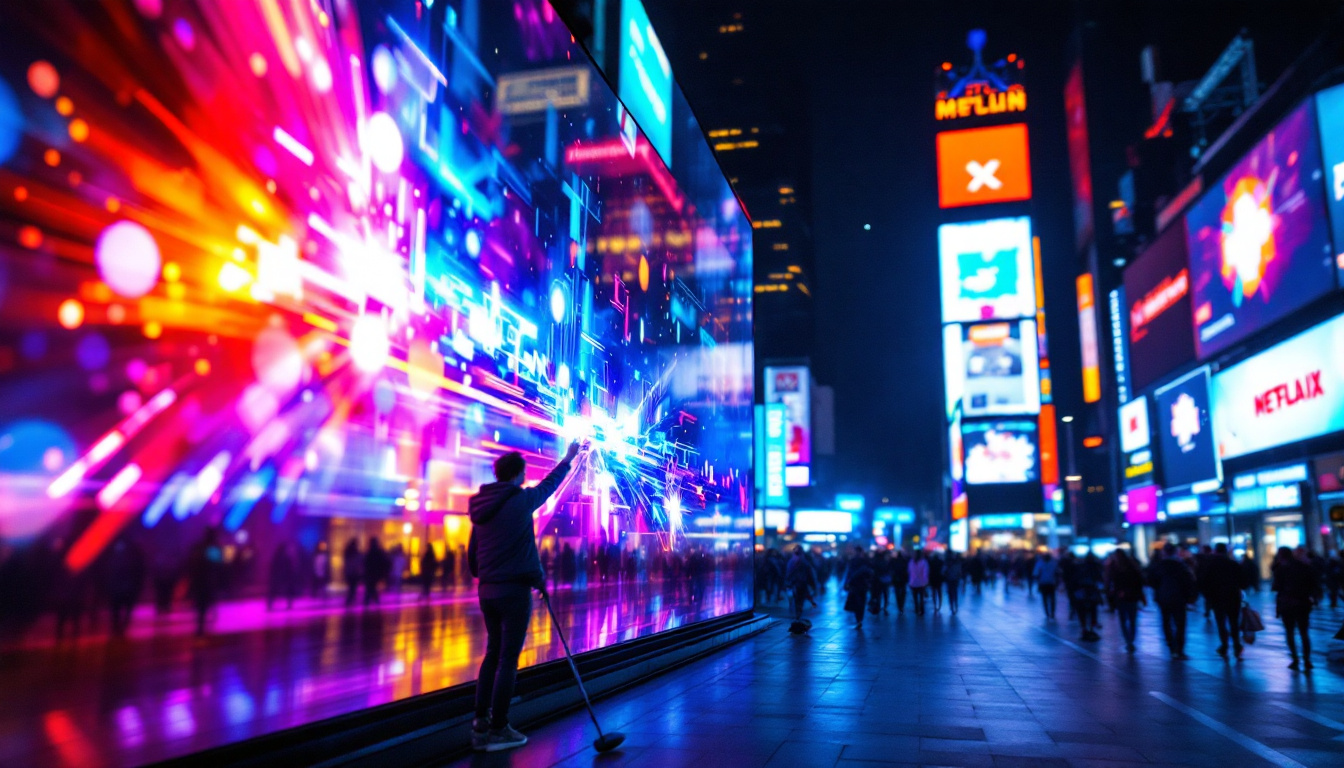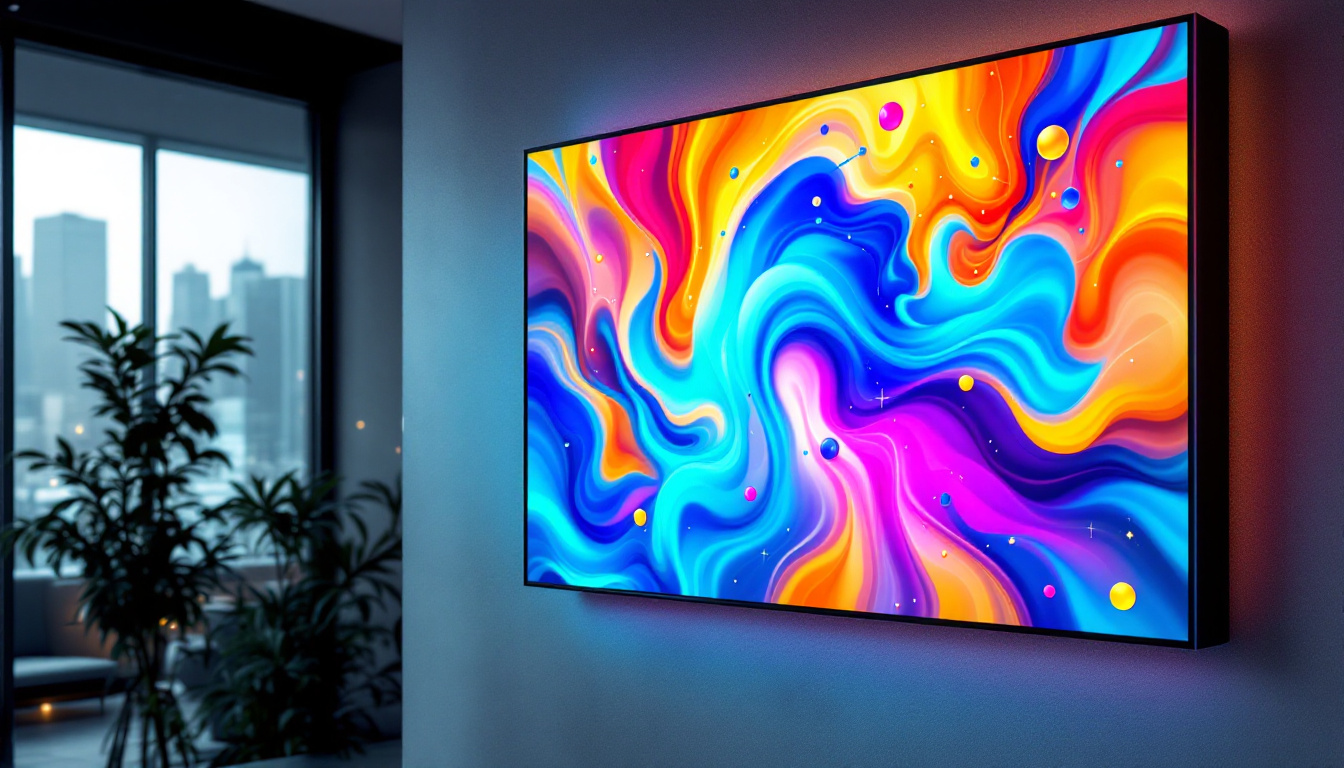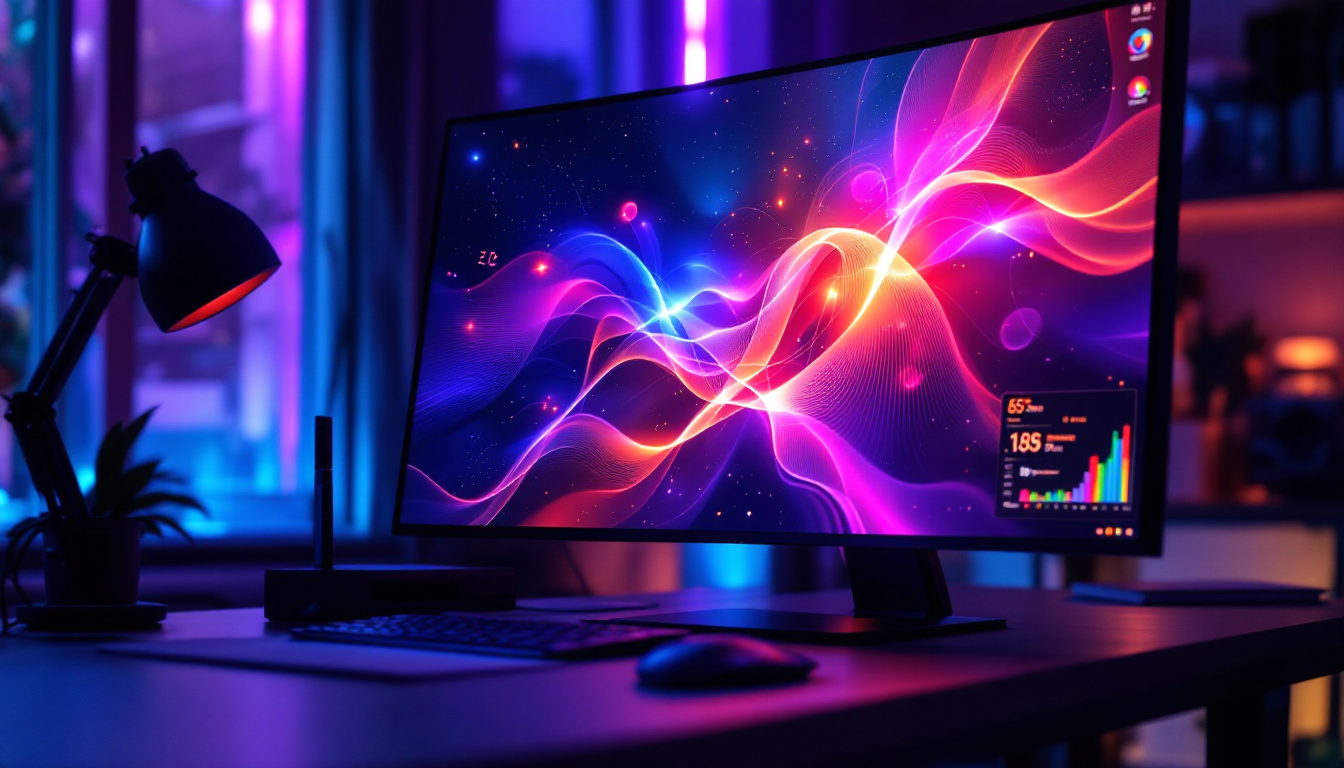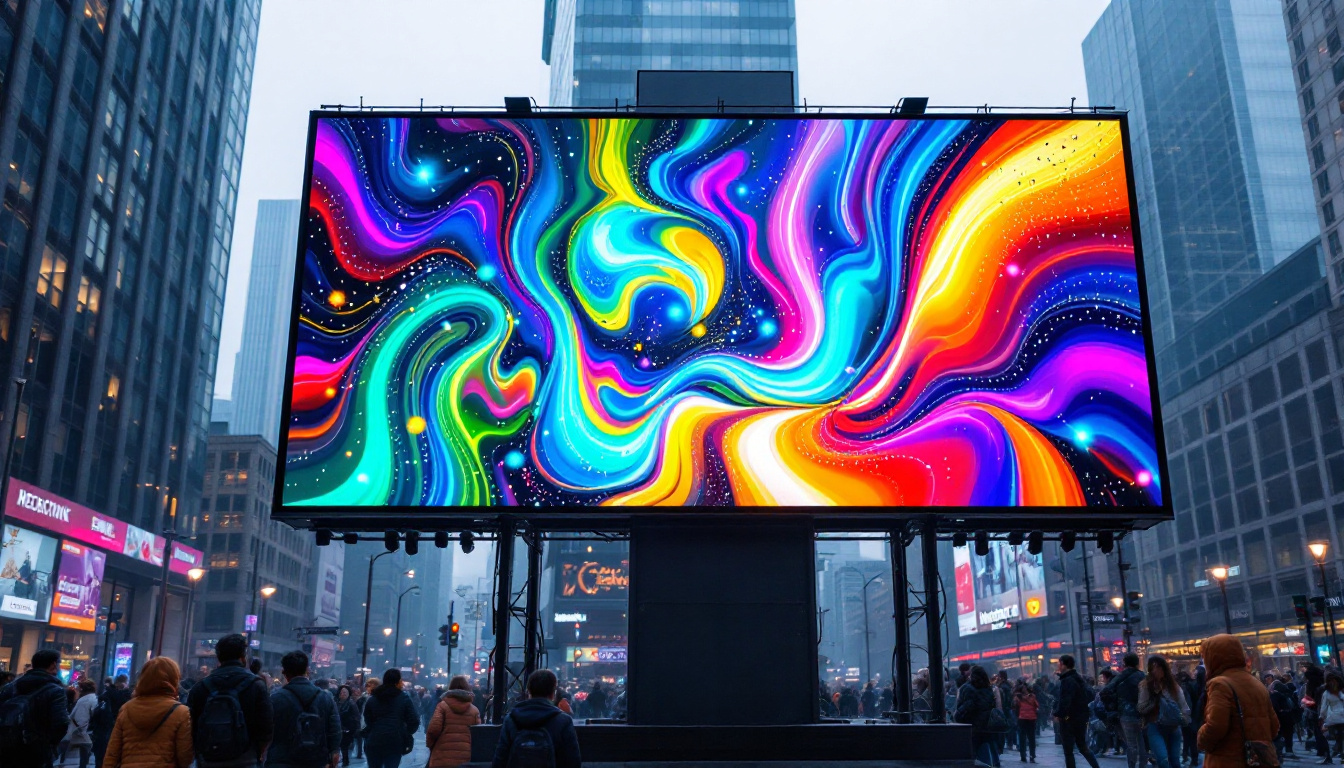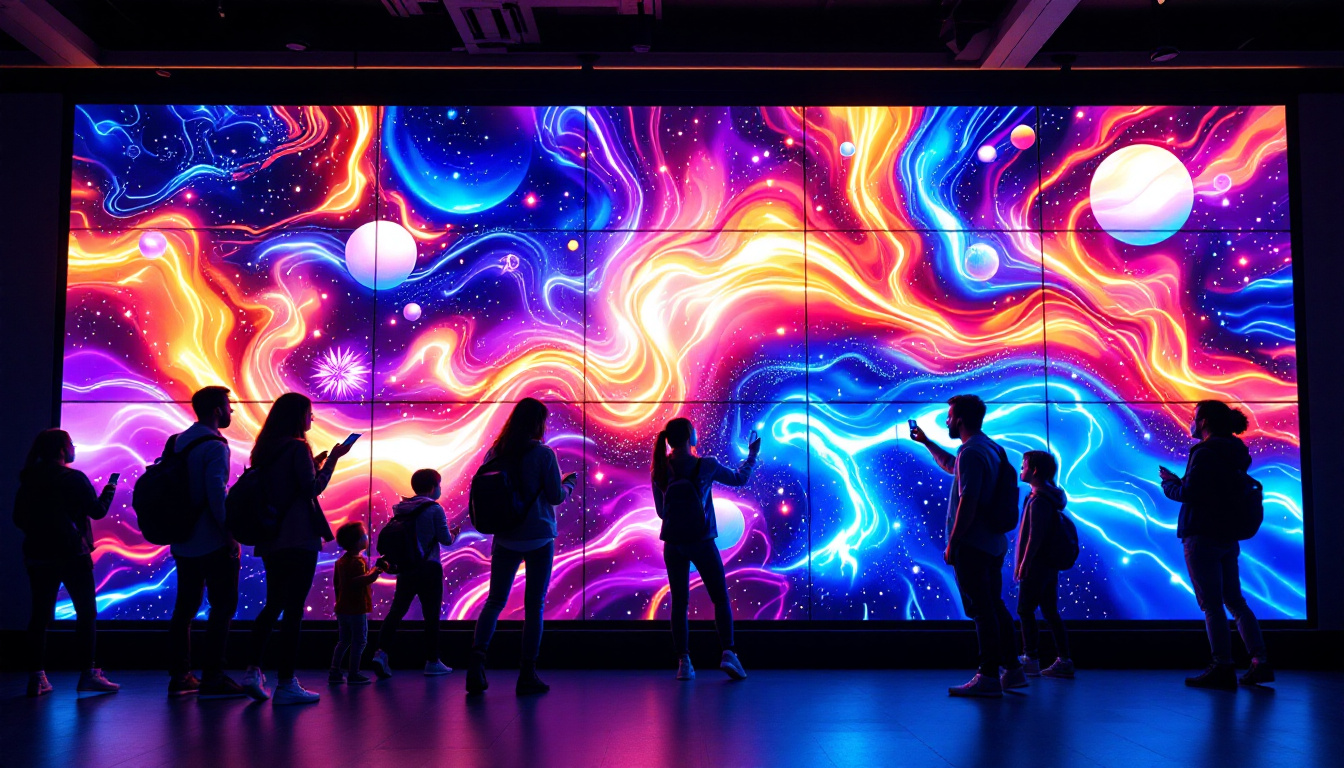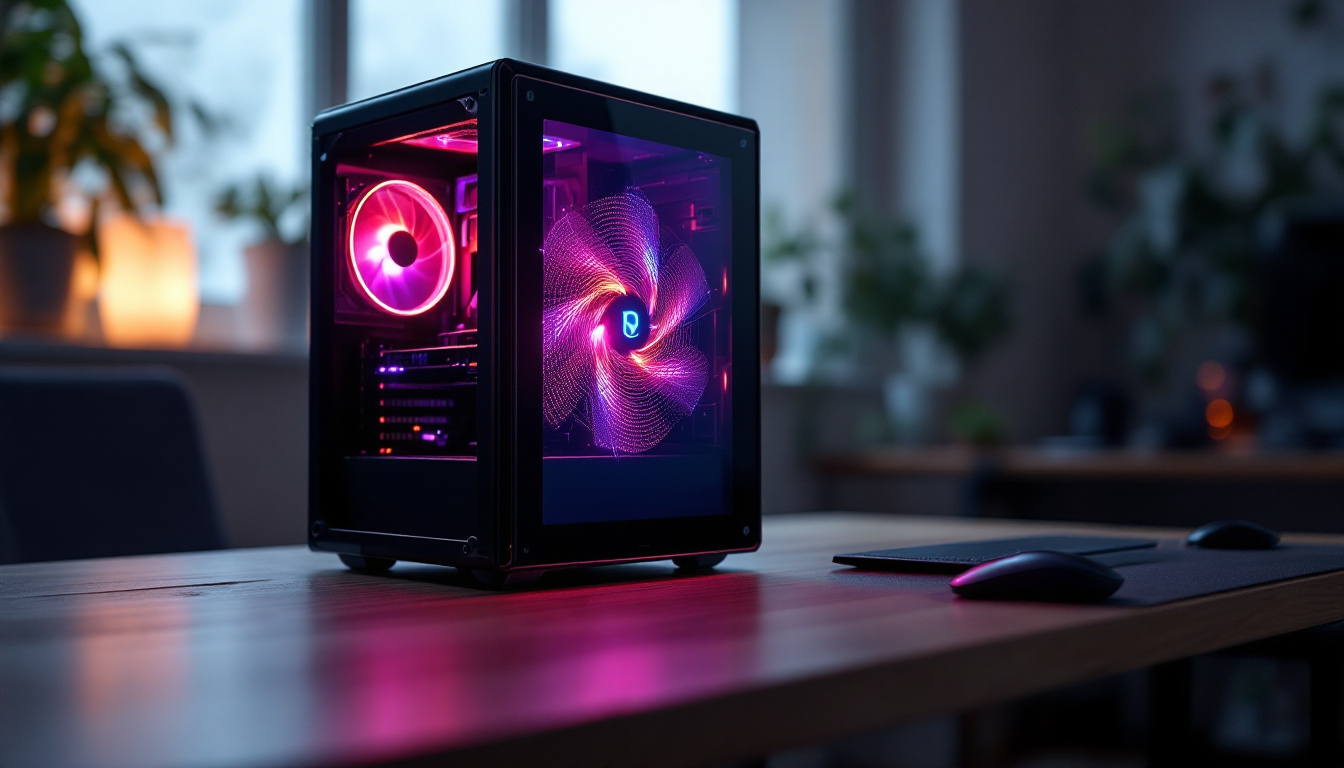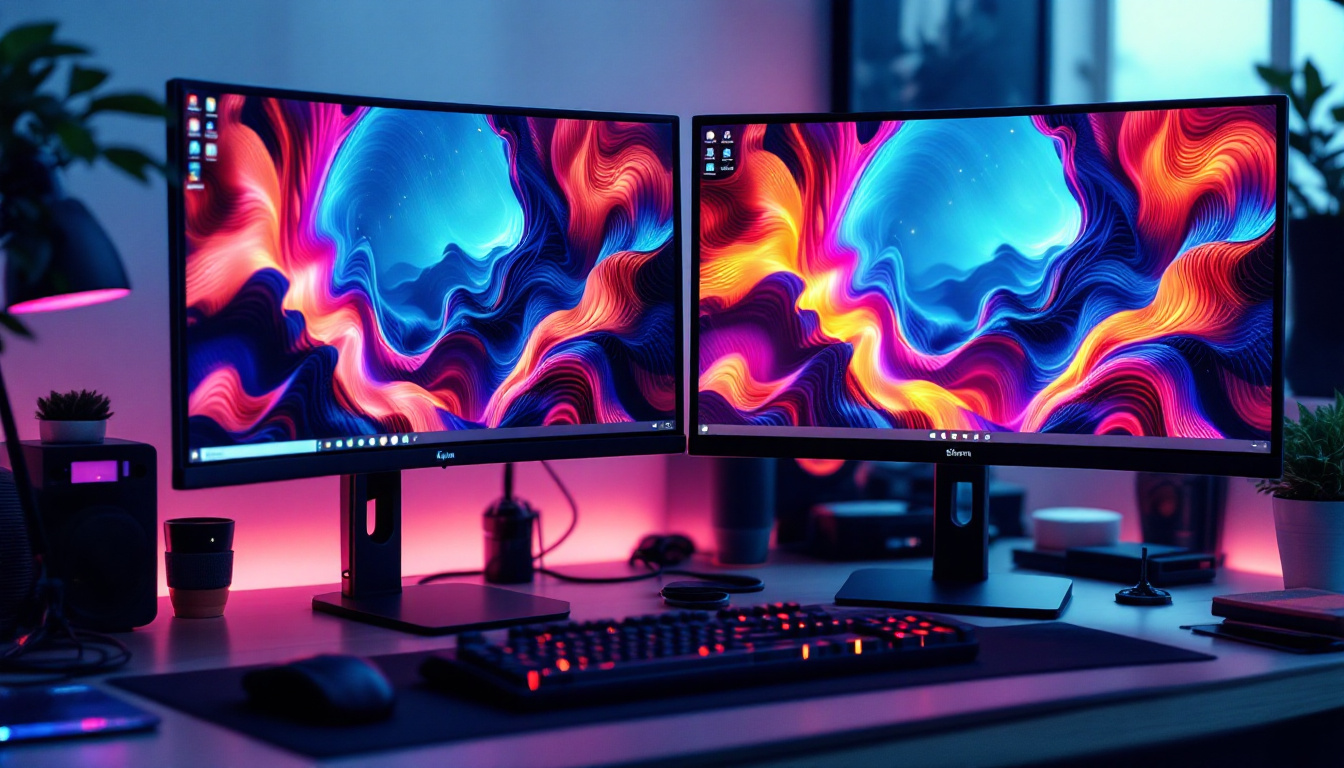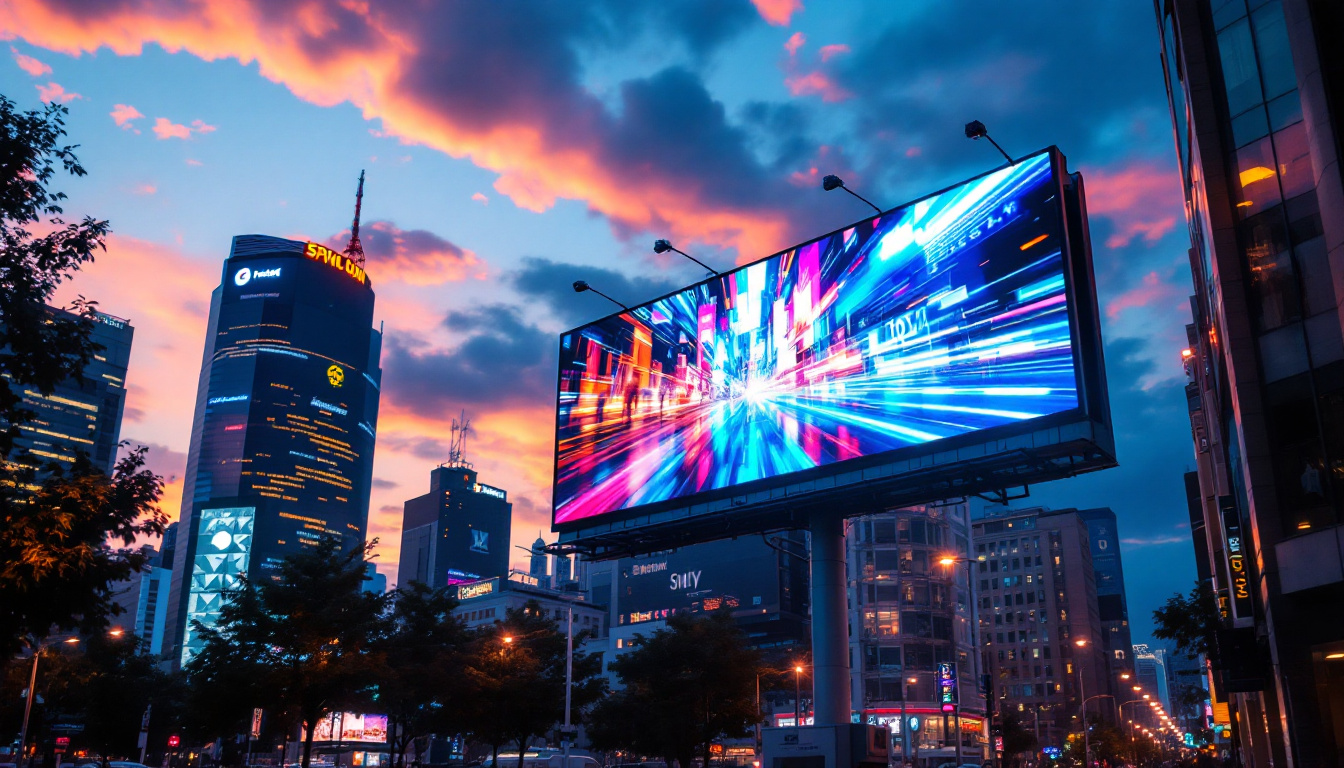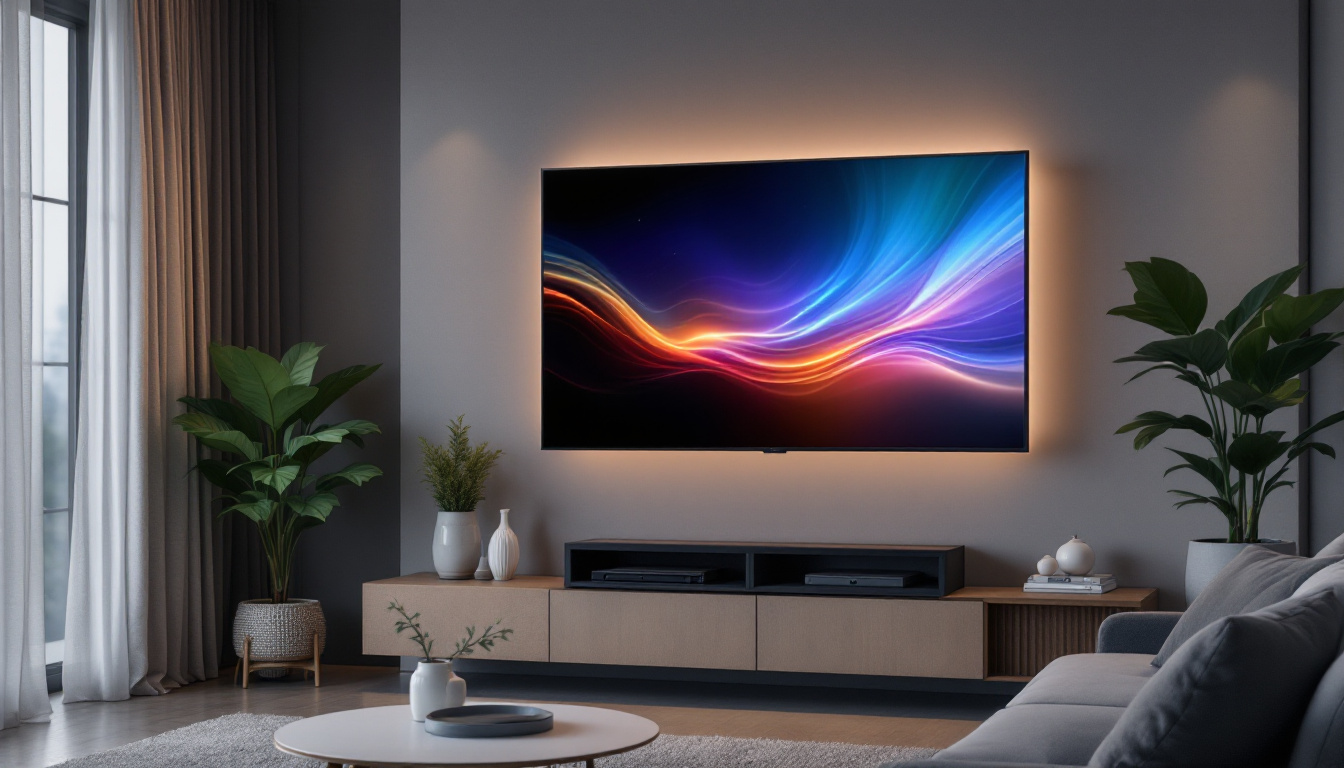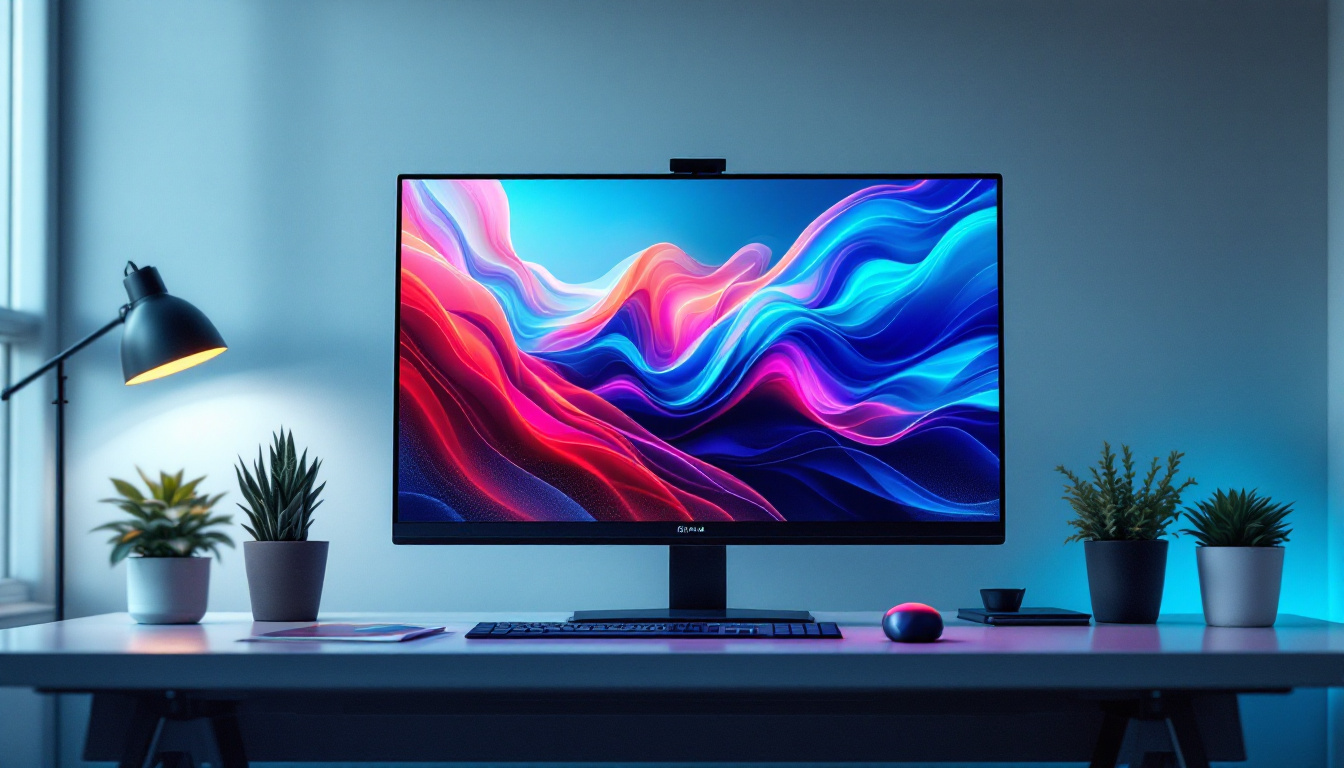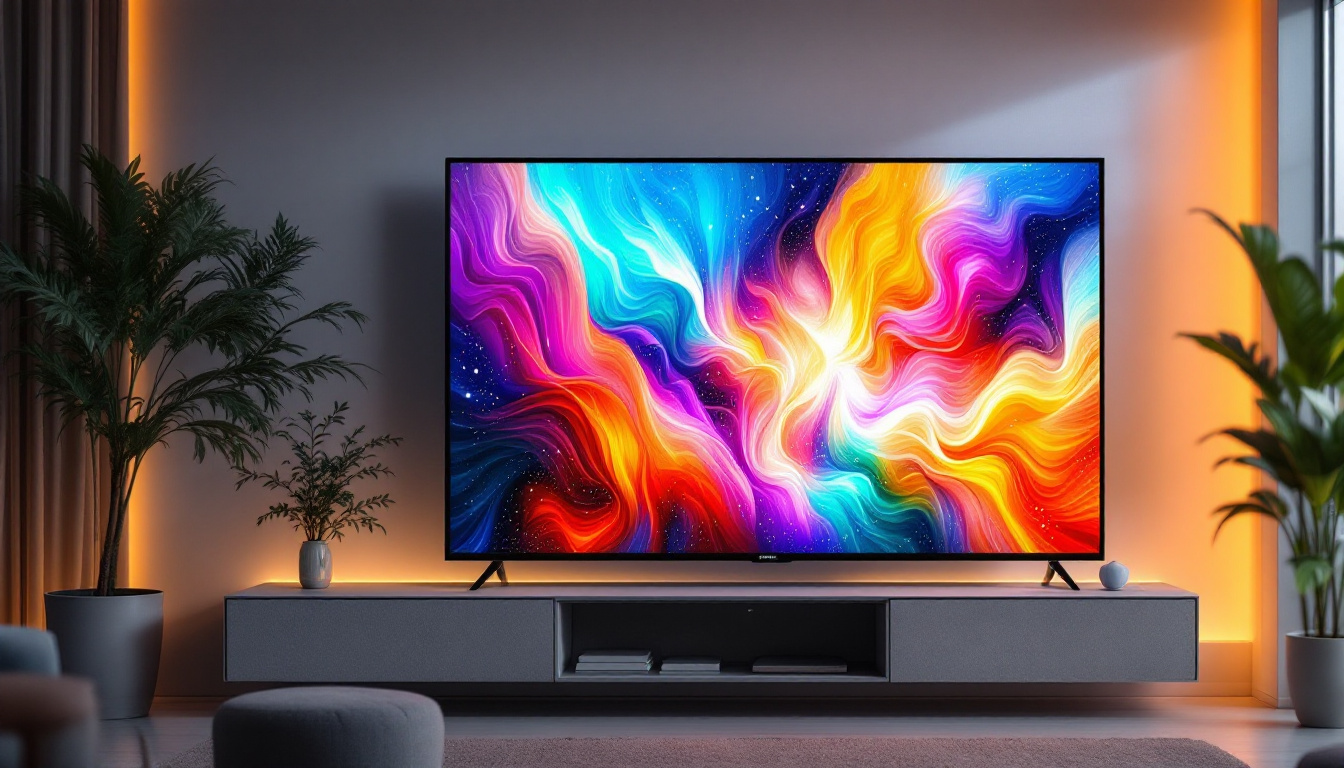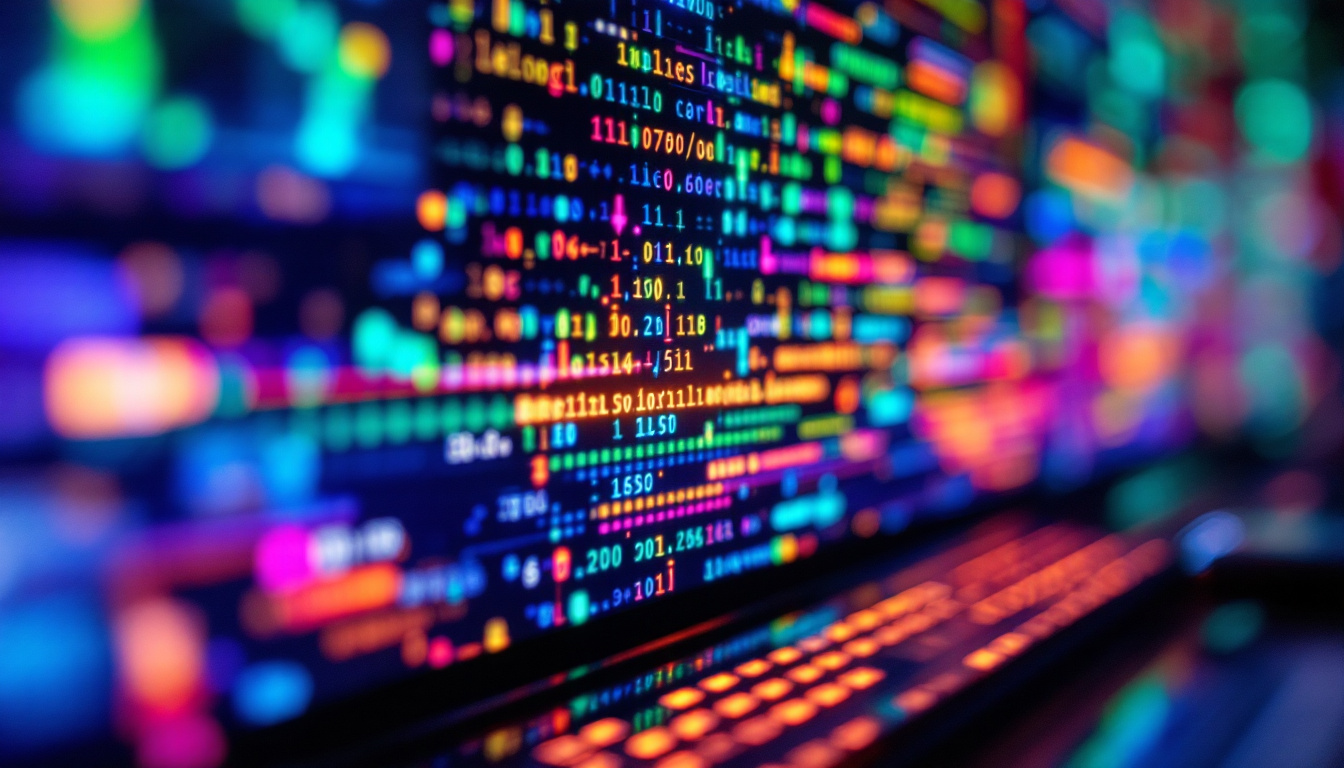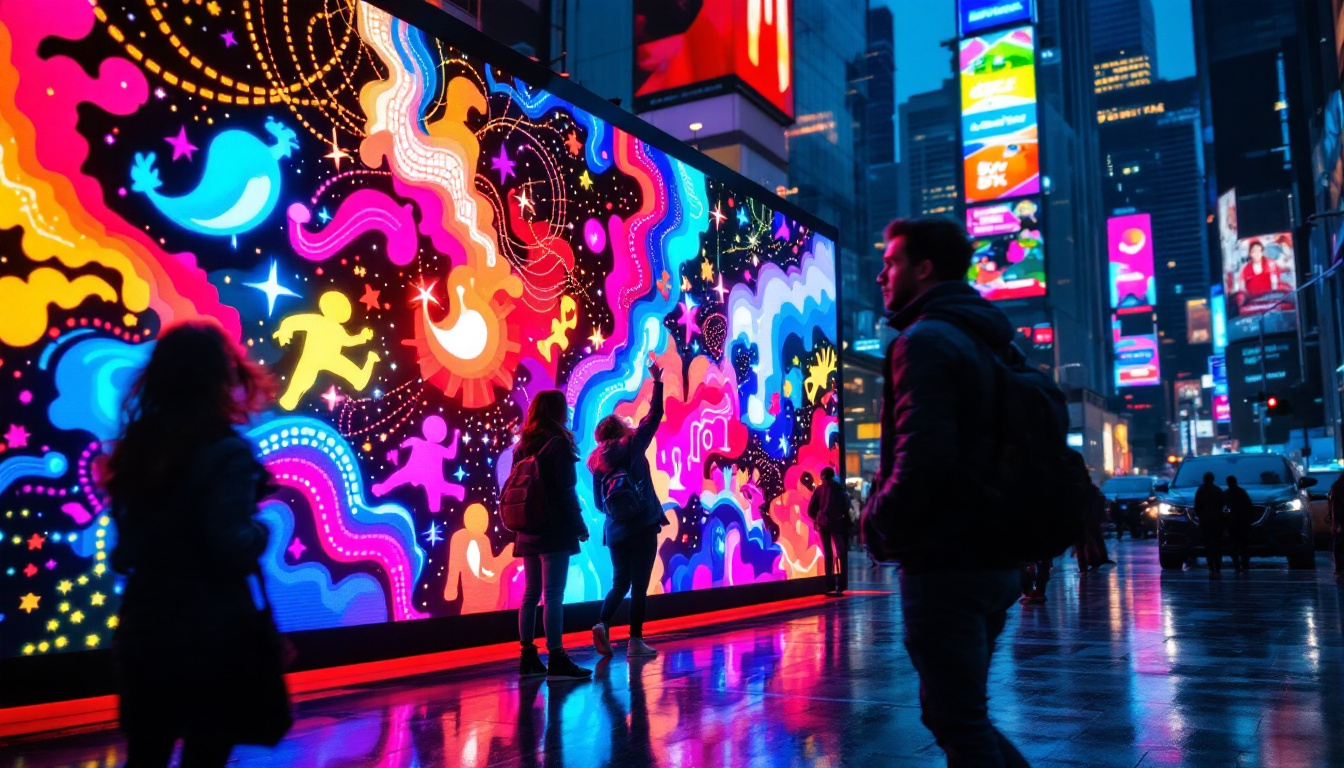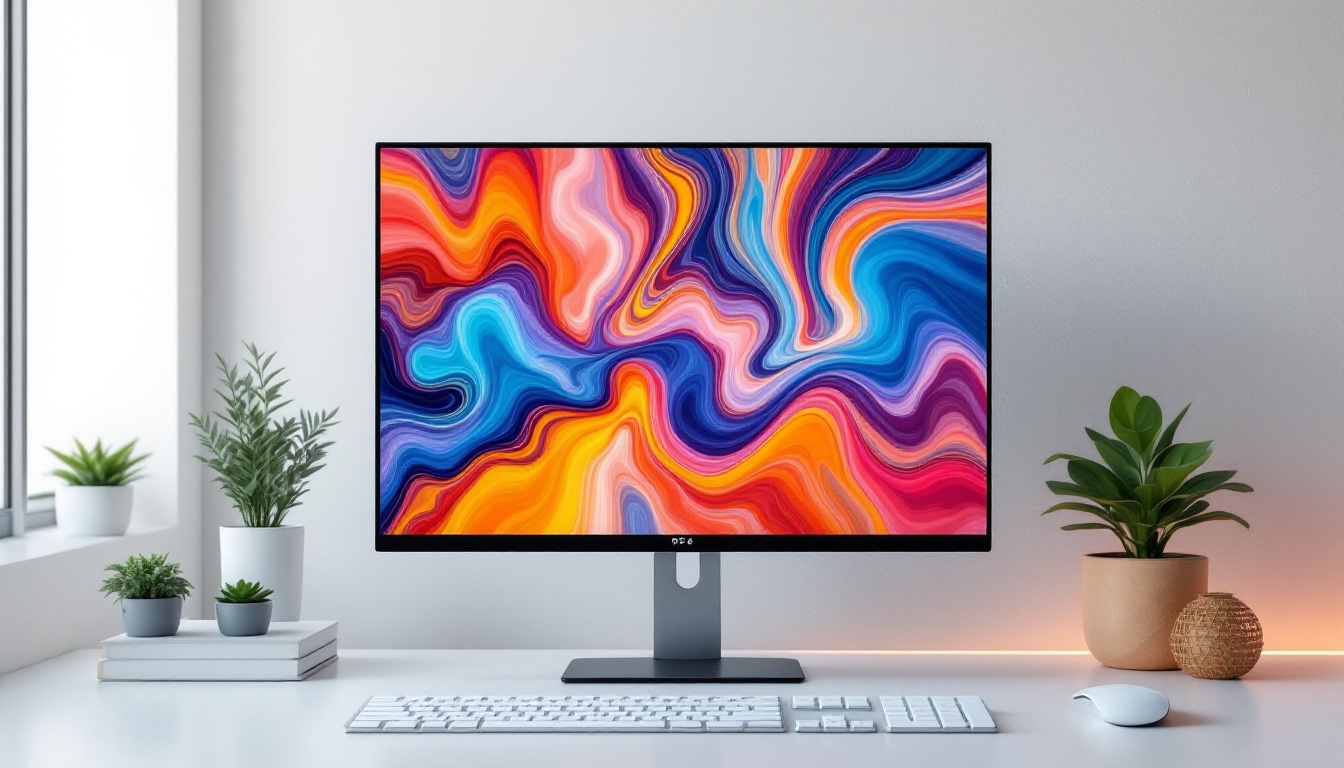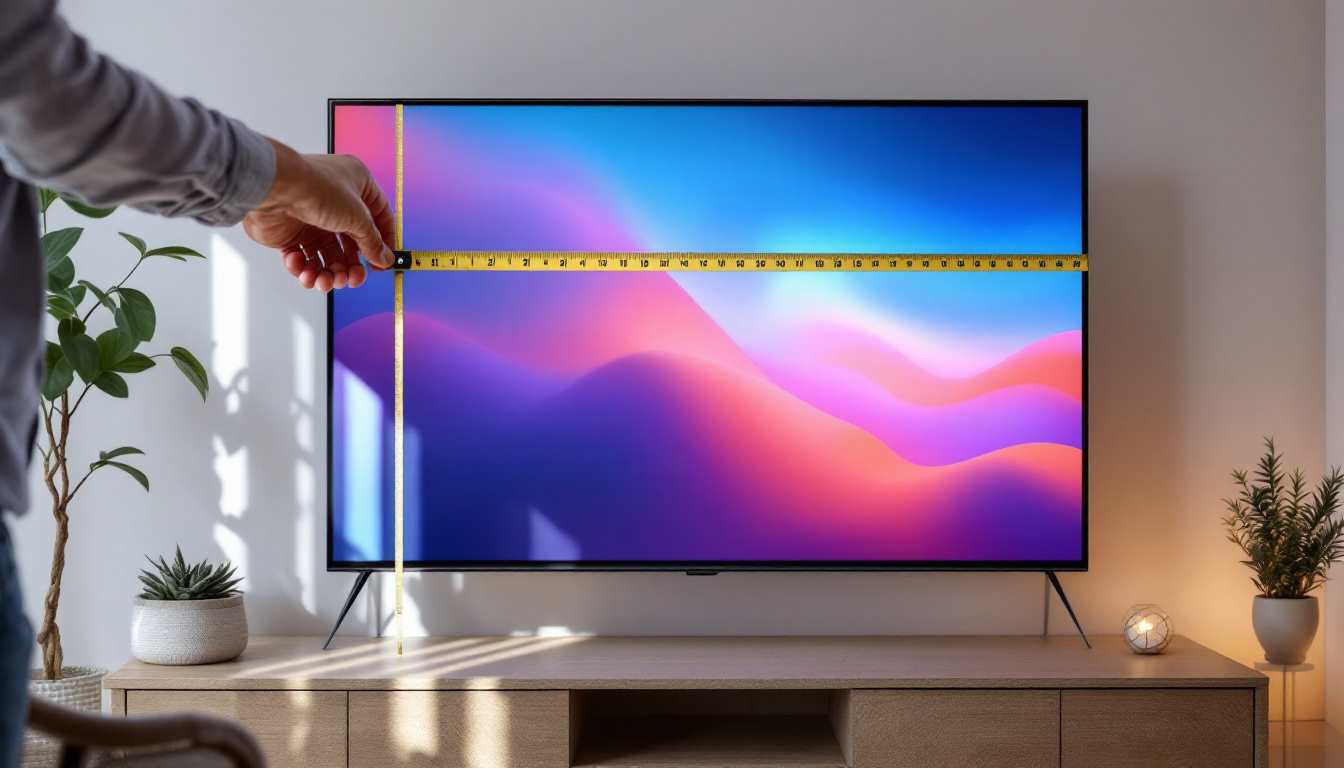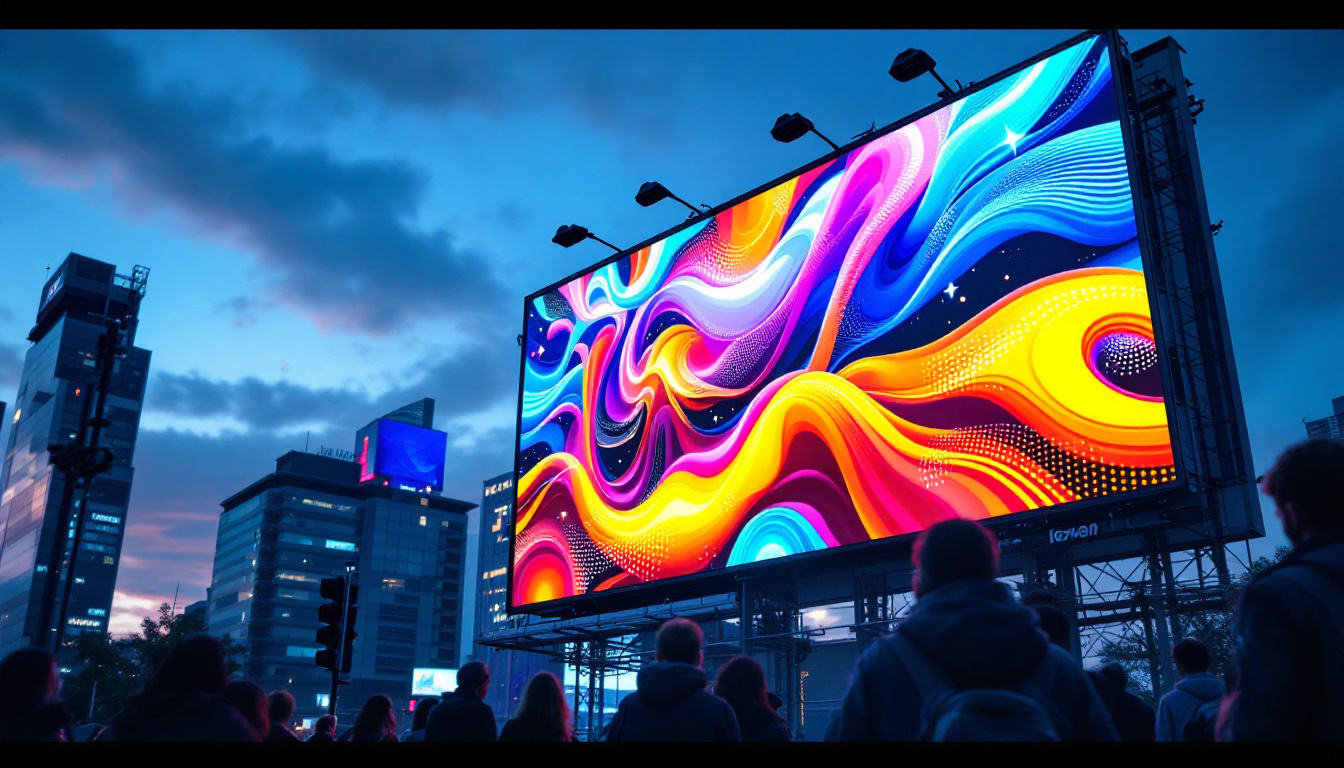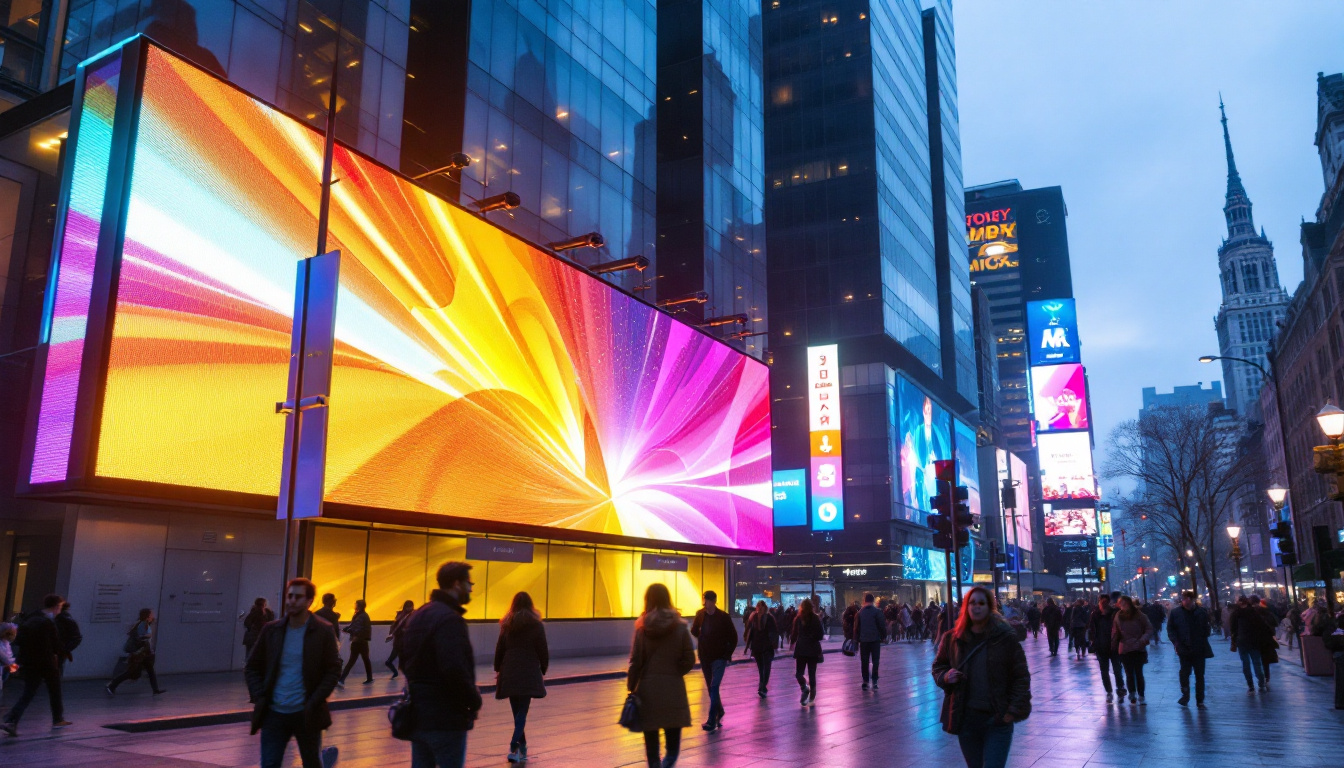In today’s digital age, the demand for vibrant and dynamic visual displays is at an all-time high. Among the various technologies available, LED wall display screens have emerged as a popular choice for a wide range of applications. From advertising to entertainment, these displays offer unmatched clarity, brightness, and versatility. This article delves into the intricacies of LED display technology, exploring its components, benefits, applications, and future trends.
Understanding LED Technology
LED, or Light Emitting Diode, is a semiconductor device that emits light when an electric current passes through it. Unlike traditional light sources, LEDs are energy-efficient and have a longer lifespan, making them an ideal choice for display technologies. The growing popularity of LED technology can be attributed to its versatility and adaptability across various sectors, from residential lighting to large-scale advertising displays. With advancements in technology, LEDs have become a staple in modern illumination and visual communication.
How LEDs Work
At the core of LED technology is the principle of electroluminescence. When electrical current flows through the diode, electrons recombine with holes within the device, releasing energy in the form of photons. This process creates light, which can be manipulated to produce various colors by using different semiconductor materials. The efficiency of this process is what makes LEDs so appealing; they convert a higher percentage of electrical energy into visible light compared to incandescent bulbs, which waste much of their energy as heat.
The arrangement of multiple LEDs in a matrix forms the basis of an LED display screen. Each pixel consists of red, green, and blue (RGB) LEDs, which can be combined in various intensities to create a full spectrum of colors. This RGB model is fundamental to achieving high-quality images and videos on LED displays. Additionally, advancements in technology have led to the development of white LEDs, which utilize a blue LED combined with a phosphor coating to produce a warm white light, further expanding their application in general lighting and display technologies.
Types of LED Displays
LED displays come in various forms, each designed for specific applications. The two primary types are:
- Direct View LED Displays: These displays consist of individual LEDs arranged closely together to form images. They are commonly used for large outdoor signs and video walls, providing excellent visibility even in bright sunlight. Their durability and weather resistance make them ideal for outdoor advertising and public information displays, where they can effectively capture attention from a distance.
- LED-backlit LCD Displays: These screens use LED technology to illuminate an LCD panel. While they do not offer the same level of brightness and contrast as direct view displays, they are widely used in televisions and computer monitors due to their thinner profiles and lower costs. The integration of LED backlighting has also improved energy efficiency and color accuracy in LCD screens, making them a popular choice for consumers seeking high-quality visual experiences.
In addition to these primary types, there are also specialized LED displays such as flexible LED screens, which can be bent and shaped to fit unique installations, and transparent LED displays, which allow for visibility through the screen while still displaying vibrant images. These innovations are pushing the boundaries of how we utilize LED technology in both commercial and artistic applications, leading to creative installations that blend seamlessly with their environments.
Benefits of LED Wall Displays
LED wall displays offer numerous advantages that make them a preferred choice for various applications. Their unique features contribute to their increasing popularity in both commercial and residential settings.
Energy Efficiency
One of the standout features of LED technology is its energy efficiency. Compared to traditional display technologies, LED displays consume significantly less power, leading to reduced electricity bills and a smaller carbon footprint. This makes them an environmentally friendly option for businesses looking to minimize their energy consumption. Furthermore, many LED displays come equipped with smart technology that allows for automatic brightness adjustments based on ambient light, further optimizing energy use. This adaptability not only enhances the viewing experience but also contributes to long-term savings on energy costs.
High Brightness and Contrast
LED displays are known for their exceptional brightness levels, making them suitable for both indoor and outdoor environments. The high contrast ratios ensure that images and videos appear sharp and vivid, even in challenging lighting conditions. This attribute is particularly beneficial for advertising and public displays, where visibility is crucial. Additionally, the color accuracy of LED displays is remarkable, allowing for a broader spectrum of colors that can make content more engaging. This capability is especially advantageous for businesses that rely on visual storytelling to capture customer attention, such as in retail or entertainment venues.
Longevity and Durability
Another significant advantage of LED wall displays is their long lifespan. With proper maintenance, LED displays can last up to 100,000 hours or more, far exceeding the lifespan of traditional display technologies. Additionally, they are more resistant to shock and vibration, making them ideal for high-traffic areas and outdoor installations. The robust construction of LED displays also means they can withstand various environmental conditions, including extreme temperatures and moisture, which is vital for outdoor advertising. This durability not only reduces the frequency of replacements but also ensures that businesses can maintain a consistent and professional appearance in their visual communications over time.
Versatility in Design
LED wall displays are incredibly versatile, allowing for a wide range of designs and configurations. They can be seamlessly tiled together to create large video walls or used in smaller formats for more intimate settings. This flexibility enables businesses to customize their displays to fit specific spaces and branding needs. Moreover, the lightweight nature of LED panels makes installation easier and less costly, as they can be mounted on various surfaces without the need for extensive structural support. This adaptability extends to content as well; businesses can easily update their displays with new graphics, videos, or messages, ensuring that their communications remain fresh and relevant.
Enhanced Interactivity
Modern LED wall displays often incorporate touch technology, enabling interactive experiences that engage viewers in a dynamic way. This interactivity can transform a passive viewing experience into an engaging one, allowing users to navigate through content, access information, or even participate in games and promotions. Such features are particularly effective in retail environments, where interactive displays can enhance customer engagement and drive sales. Additionally, the integration of sensors and data analytics can provide businesses with valuable insights into viewer behavior, helping them tailor their marketing strategies more effectively.
Applications of LED Wall Displays
The versatility of LED wall displays allows them to be used in a variety of settings. From commercial advertising to artistic installations, their applications are vast and varied.
Advertising and Marketing
LED wall displays have revolutionized the advertising industry. Their ability to display dynamic content, such as videos and animations, captures the attention of passersby more effectively than static billboards. Businesses can easily update their advertisements in real-time, allowing for targeted marketing campaigns that can adapt to changing consumer behaviors.
Entertainment and Events
In the entertainment industry, LED displays play a crucial role in enhancing the audience experience. Concerts, festivals, and sporting events utilize large LED screens to broadcast live performances, scores, and instant replays. The immersive experience created by these displays keeps audiences engaged and entertained.
Corporate and Educational Use
LED displays are increasingly being adopted in corporate environments for presentations, meetings, and training sessions. Their clarity and brightness ensure that information is easily visible to all participants, regardless of the room’s lighting conditions. Similarly, educational institutions are using LED displays to enhance learning experiences, providing students with interactive and visually stimulating content.
Future Trends in LED Display Technology
The LED display industry is continuously evolving, driven by technological advancements and changing consumer demands. Several trends are shaping the future of LED displays.
Increased Resolution
As technology advances, the demand for higher resolution displays is on the rise. Manufacturers are now producing LED displays with finer pixel pitches, allowing for greater detail and clarity. This trend is particularly important for applications requiring high-definition visuals, such as digital signage and broadcast media.
Flexible and Transparent Displays
Innovations in LED technology have led to the development of flexible and transparent displays. These displays can be bent or shaped to fit various surfaces, opening up new possibilities for creative installations. Transparent LED displays are also gaining popularity, allowing businesses to showcase content while maintaining visibility through the screen.
Integration with Smart Technology
The integration of LED displays with smart technology is another trend to watch. With the rise of the Internet of Things (IoT), LED displays can now be connected to various devices, enabling real-time data sharing and interactive experiences. This connectivity allows for smarter advertising solutions and enhanced user engagement.
Challenges and Considerations
While LED wall displays offer numerous benefits, there are also challenges and considerations that potential users should keep in mind.
Initial Costs
The initial investment for LED display technology can be substantial, especially for high-quality models. Businesses must weigh the upfront costs against the long-term savings and benefits of energy efficiency and durability. However, as technology advances and production costs decrease, LED displays are becoming more accessible to a wider range of consumers.
Maintenance and Calibration
Maintaining LED displays requires regular calibration and servicing to ensure optimal performance. Dust, dirt, and environmental factors can impact image quality, necessitating routine cleaning and maintenance. Organizations should factor in these ongoing costs when considering LED display solutions.
Conclusion
LED wall displays represent a significant advancement in visual technology, offering unparalleled brightness, energy efficiency, and versatility. Their applications span various industries, from advertising to education, making them a valuable asset in today’s digital landscape. As technology continues to evolve, the future of LED displays looks promising, with innovations that will further enhance their capabilities and applications.
For businesses and organizations looking to invest in visual display technology, understanding the intricacies of LED wall displays is crucial. By weighing the benefits against the challenges, users can make informed decisions that will enhance their communication strategies and audience engagement.
In summary, LED wall displays are not just a trend; they are a transformative technology that is reshaping how information is presented and consumed. As the demand for high-quality visual experiences continues to grow, LED displays will undoubtedly play a pivotal role in the future of communication and advertising.
Discover LumenMatrix LED Display Solutions
Ready to elevate your visual communication with cutting-edge LED technology? Explore LumenMatrix’s comprehensive range of LED display modules, designed to bring your brand to life and captivate your audience. Whether you’re looking for Indoor, Outdoor, Vehicle, Poster, Sports, Floor, Custom, All-in-One, or Transparent LED Displays, LumenMatrix has the innovative solutions to transform your space and deliver your message with vibrancy and precision. Check out LumenMatrix LED Display Solutions today and join the revolution in digital signage and visual storytelling.

